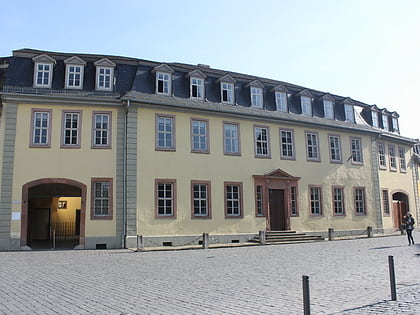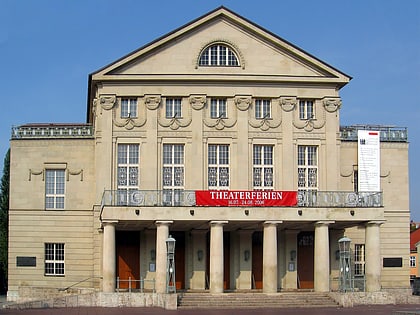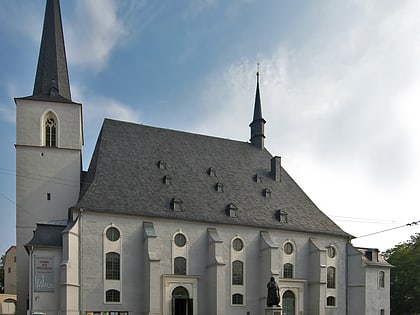Römisches Haus, Weimar


Facts and practical information
The Roman House is a building on the edge of the Park on the Ilm River in Weimar and has been a UNESCO World Heritage Site since 1998 as part of the "Classical Weimar" ensemble.
It was built between 1791 and 1798 as a garden house for the then Duke Carl August and is an early classicist building in Germany. It is characteristically based on the Roman temple. Goethe brought the inspiration for it with him from his trip to Italy. Due to its elevated position on the western long side of this landscape park, it allows a wide view of the Ilm valley stretching north and south at this point.
The designs for the building were provided by the Hamburg architect Johann August Arens. Goethe was initially in charge of the construction work. The interior designs came from the Dresden architect Christian Friedrich Schuricht. Johann Heinrich Meyer was also involved in the artistic design of the rooms. After Carl August's death in 1828, the garden house was only rarely occupied. From 1844, the house was left to the hereditary Grand Duke Carl Alexander. A drawing by Friedrich Gilly from 1797/98 shows the passage from the south below the Roman House with the Doric columns, the fountain, which was probably created by Martin Gottlieb Klauer Klauer created not only the wall decoration on the outside, but also in the interior. The gable group of the west gable, which was originally created by him according to a design by Heinrich Meyer, was replaced in 1819 by Peter Kaufmann.
The Roman House became the property of the State of Thuringia in 1922 after the abdication of the Hereditary Grand Duke Wilhelm Ernst in 1918 as a result of the lost First World War. In 1954, the NFG took over the house, which had extensive restoration work carried out on the building. Today it is used as a museum open to the public and houses a permanent exhibition on the history of Weimar's Ilmpark. Since 2012, four torsos of the temple lord figures from the Tempelherrenhaus, created by Johann Peter Kaufmann as copies of the wooden originals by Martin Gottlieb Klauer, have been housed. One torso is still in situ.
Weimar
Römisches Haus – popular in the area (distance from the attraction)
Nearby attractions include: Stadtschloss, Goethes Gartenhaus, Park an der Ilm, Bauhaus-Museum.
Frequently Asked Questions (FAQ)
Which popular attractions are close to Römisches Haus?
How to get to Römisches Haus by public transport?
Bus
- Helmholtzstraße • Lines: 1 (5 min walk)
- Berkaer Straße • Lines: 1, 229, 253 (6 min walk)
Train
- Oberweimar (24 min walk)
- Weimar Berkaer Bahnhof (30 min walk)











